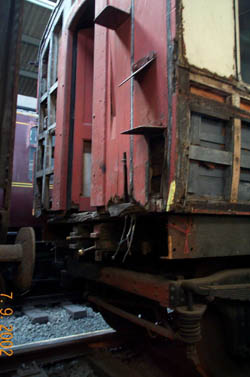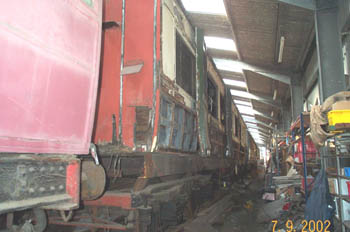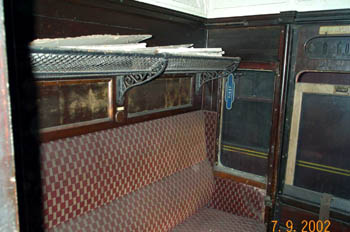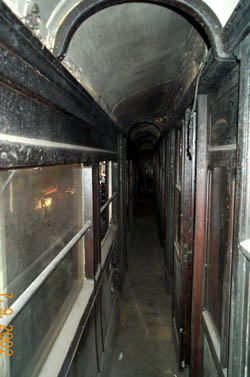
Introduction
731 is the sole survivor of 1187 G&SWR passenger carriages which were handed over to the LMS at the Grouping of 1923. As such, it has been assessed by the NRM/VCT survey as being of exceptional national importance. It was built in 1914 by the Birmingham Railway Carriage and Wagon Company, and designed at Kilmarnock by the Superintendent, Peter Drummond. It was ordered to provide additional passenger accommodation for the holiday traffic of that year, and would have worked between Glasgow St Enoch and Carlisle and Stranraer on the most important expresses.
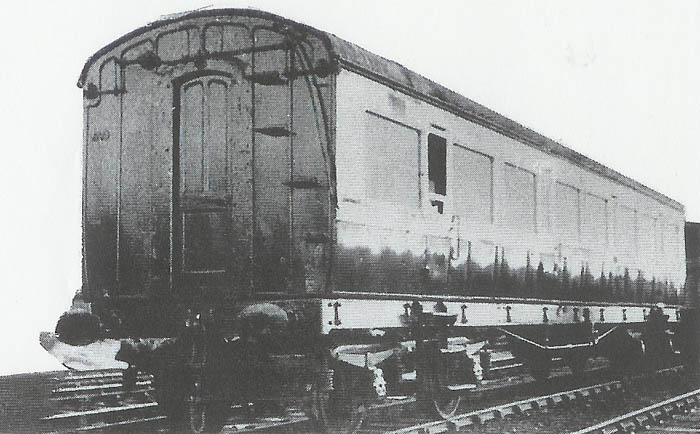
In 1923, the carriage passed to the London, Midland and Scottish Railway, who may well have used it more widely. It became LMS No 18203 in 1923, and LMS No 3375 in 1933. It passed into British Railways ownership on nationalisation in 1948, becoming Sc3375M. It was withdrawn from main line service on 14th November 1954, and sold to the Admiralty on 16th July 1955. The Navy used it on workmen’s trains within the Royal Naval Armaments Depot (RNAD) at Bandeath, near Throsk in Stirlingshire. While there, all main line equipment was removed, including the lighting and heating and it was used as a transport for workpeople around the extensive site. It was purchased for preservation by the SRPS in 1967 and transferred to the Falkirk depot by rail. In 1972 a first attempt at restoration was made, and the vehicle was repanelled in plywood, following removal of the hardboard fitted by the Navy and which had become saturated, thus placing the whole vehicle at risk. Subsequently the carriage was damaged by a heavy shunt involving a Class 25 diesel, in which it came of second best and the east end of the vehicle was seriously damaged. A further attempt at restoration was made in the 1980s, where all the mahogany panels were removed from the compartment side. Additionally, the vehicle was vandalised and set on fire following transfer to Bo’ness.
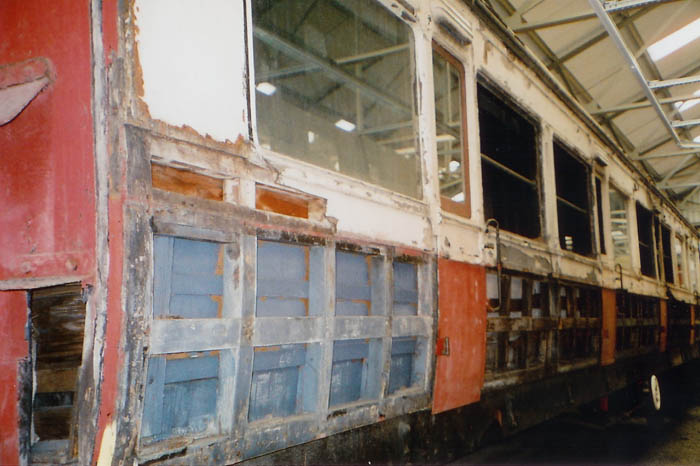
In 2002 a survey by professional rail engineers was undertaken at Bo’ness, where the carriage had been stored under cover. This showed that, in spite of heavy deterioration, the vehicle was still capable of being restored. Particularly important was the survival of the intact 1914 interior. Very few carriages of this era have retained their original fittings and configuration in the way that 731 has. Following this survey, the surviving original drawings were located with thanks to the Glasgow and South Western Railway Association and a major research project was undertaken to establish the validity of restoration as opposed to conservation. However, it was not until 2019 that the final permission to commence work was given by the Scottish Railway Museum Trust, owners of the carriage. The group which had previously restored the 1901 Manson G&SWR passenger brake – and which had been awarded Runner Up status ion the 2020 HRA Morgan Award - was entrusted with this heavy responsibility and work finally commenced. At the same time, a fund raising initiative was launched, and this has proven very successful.
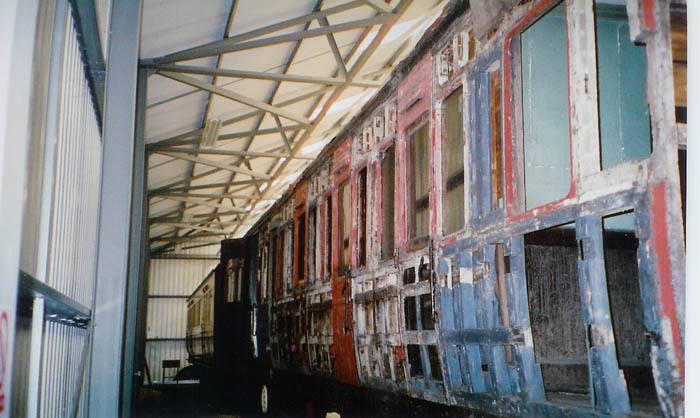
More photos of "early days" shown below.
